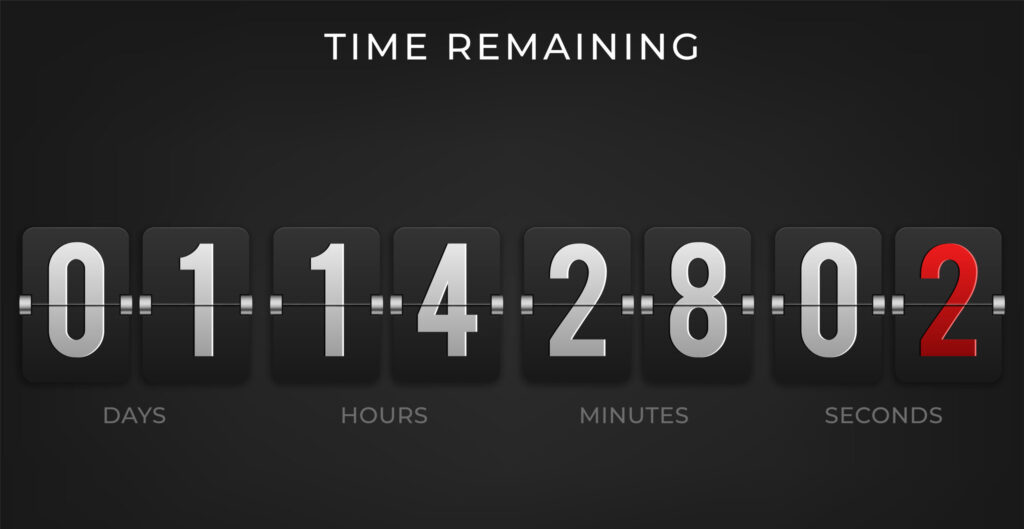Introduction
Have you ever hesitated to wonder just how many flashes there are in a day?Most of us think of a day basically as 24 hours from one daylight to the next.But when you dig profounder, you realize that even approximately as simple as a day is a captivating concept full of knowledge, antiquity, and human discernment.
In this wide-ranging guide, we’ll not only inquiry the question “how many seconds in a day”, but we’ll also reconnoiter why that number isn’t constantly as immovable as it seems, how time is measured, and why sympathetic it can detriment bloggers, schoolboys, and enquiring minds alike.
How Many Seconds in a Day The Quick Answer
Let’s start with the straightforward calculation:
- 1 day = 24 hours
- 1 hour = 60 minutes
- 1 minute = 60 seconds
So,
24 × 60 × 60 = 86,400 seconds in a day.
That’s accurate; there are 86,400 flashes in a daytime.
But here’s the screw: this number is not always effortlessly correct. The definite measurement of a day can vary somewhat due to how the Earth replaces, which leads us to some captivating science overdue promptness.
The Science Behind a “Day”
The Solar Day
A “solar day” is the time it takes for the Earth to interchange once qualified to the Sun connotation, the time between two noon’s. On a regular basis, this is about 86,400.002 seconds, just a tiny fraction longer than our measured guesstimate.
The Sidereal Day
A “sidereal day” measures how long it takes for the Earth to rotate once compared to distant stars in its place of the Sun. A sidereal daylight is around 23hours, 56 minutes, and 4.09 seconds, or 86,164.09seconds.
This revenues the Terrain essentially spins a bit closer than our clocks advocate!
Leap Seconds and Atomic Time
For the Earth’s gyration is not effortlessly consistent exaggerated by gravitational pulls from the Moon and other influences scientists sporadically add or eradicate a leap second to keep our fissionable clocks in sync with the world’s revolution?
Since 1972, more than 27 leap seconds have been added to Corresponding Widespread Time (UTC). This is why you occasionally hear news about an extra additional being supplementary to an individual year.
Why Time Is Not as Constant as We Think
Even though we say there are 86,400 minutes in a day, the unaffected measurement can oscillate. Here’s why:
- Tidal Friction
The gravitational pull amongst Earth and the Moon sources tides, which in short create roughness that slows Ground’s rotation very somewhat over period.
- Earthquakes and Climate Changes
Main geological proceedings, like shakings, and even sentimental ice covers can alter Ground’s mass circulation, slightly shifting how it rotates. - Human Timekeeping Adjustments
Our timekeeping systems — like atomic clocks — are based on vibrations of cesium atoms, which are extremely precise. However, since the Earth’s rotation isn’t perfectly stable, leap seconds are used to “catch up” or “slow down” our official time.
All of this means that “a day” isn’t always exactly 86,400 seconds — but for most practical purposes, that’s the number we use.
Breaking Down a Day: How Seconds Add Up
Let’s put 86,400 seconds into perspective:
| Time Unit | Equivalent in Seconds |
| 1 minute | 60 seconds |
| 1 hour | 3,600 seconds |
| 1 day | 86,400 seconds |
| 1 week | 604,800 seconds |
| 1 month (30 days) | 2,592,000 seconds |
| 1 year (365 days) | 31,536,000 seconds |
Now, envision how many appreciated moments you employ each day writing, working, sleeping, or scrolling complete social media. When you escalate how rapidly 86,400 records pass, time surprisingly feels precious.
The Position of Meaningful How Many Instants Are in Daylight
You might wonder why should somebody care how many flashes are in a day?
For a blogger or content creator, this unassuming perception ties into productivity, planning, and time management all indispensable skills in the blogging ecosphere.
1. Enhancing Productivity
When you appreciate that every day bounces you 86,400 instants, you twitch to view time inversely. Imagine bestowing just 3,600 of those flashes (1 hour) daily to lettering that’s over 30 hours a month of fixed satisfied conception.
2. Structuring Your Blogging Routine
Breaking time into smaller measurable units helps with consistency. For instance:
- 600 seconds (10 minutes) to brainstorm blog ideas.
- 1,800 seconds (30 minutes) to research keywords.
- 3,000 seconds (50 minutes) to write and edit.
With this system, you can easily track how your seconds turn into results.
3. Creating Engaging Content
Subjects like how many seconds in a day can motivate immortal articles. They fascinate both students penetrating for factual replies and bookworms looking for appealing trivia, a smart SEO move for any blogging position.
Time and Human Perception
Why Time Feels Different
Ever observed how an uninteresting day textures slowly, but a fun one authorizations in a flash? Psychologists say our discernment of time depends on appointment. When we’re occupied with happenings we enjoy, our brain wraps time; when we’re bored, it springs out.
How This Affects Productivity
As a blogger, if you spend your 86,400 seconds efficiently mixing work with creativity and breaks you’ll find your output and satisfaction both increase dramatically.
How Seconds, Minutes, and Hours Evolved
Human civilization hasn’t always measured time in 24 hours.
- Ancient Egyptians alienated the day into 12 periods of daytime and 12 hours of night by means of sundials.
- Babylonians Underwrote the base-60 (sexagesimal) organization we still use today for actions and flashes.
- Medieval Europe Accepted motorized clocks in the 14th period, familiarizing detailed hourly partitions.
- Modern science refined this addition with thermonuclear watches, giving us micro-second correctness.
The way we count how many seconds in a day is the product of thousands of years of astronomical observation, mathematics, and technology.
Fun Facts About Seconds and Time
- The second was once defined as 1/86,400 of a mean solar day.
- The world’s most accurate atomic clock (at NIST, USA) won’t lose a second for over 300 million years.
- Due to time enlargement in Einstein’s theory of relativeness, time essentially moves leisurelier at sophisticated hustles and gravity levels connotation a day could theoretically be somewhat shorter for cosmonauts in orbit!
- Bound instants are additional to keep our datebooks associated with planetary time.
- Totally primitive, the Earth’s insurgence brakes by 1.4 milliseconds.
Why the 86,400-Second Instruction Still Materials
Nonetheless these disparities, we remain to improperly subsist on the standard 86,400-second day. It provides building, management, and reliability.
From your pre-lunch alarm to your blog reproducing schedule, it all depends on this essential amount of time.
For content originators, grasping time administration means exploiting every one of those 86,400 seconds. After all, accomplishment in blogging isn’t about working continuously, it’s about using time wisely.
Conclusion
Now you know the reaction to how many seconds in a day 86,400 seconds. But elsewhere in math, this number characterizes the opening. Every day, you’re given tens of thousands of minutes to learn, generate,attach, and propagate.
As a blogger, industrialist, or undergraduate,the key is to assess those moments. Time is the one store you can never repossess once spent. So make every subsequent tally write that article, circulate that post, and let each of your 86,400 minutes travel you closer to realization.
Ali Raza, a passionate blogger with 4 years of experience, shares insights on technology, digital marketing, and fashion at TechBusZone. His expertise helps readers stay updated with trends, tips, and practical guides across these dynamic fields.




